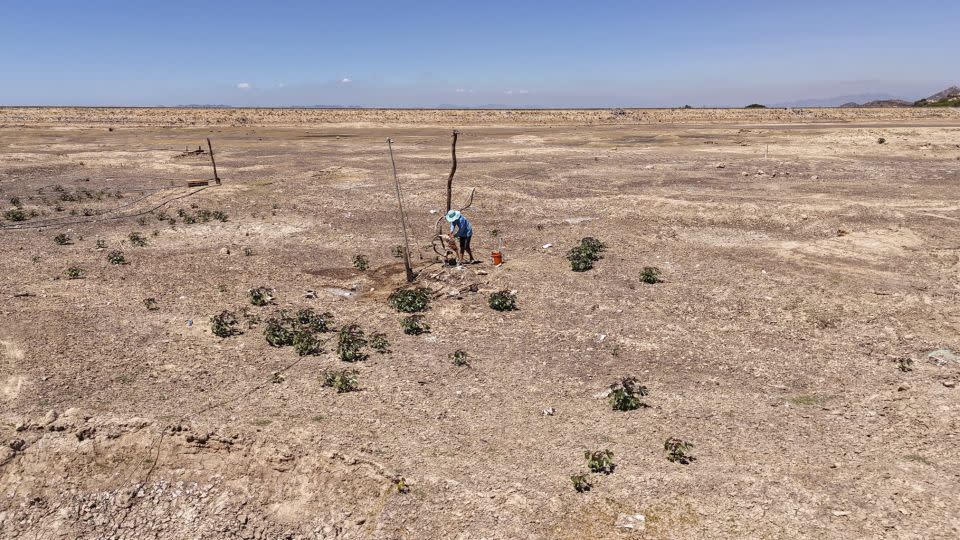Toddler deaths from extreme heat have raised the risk of climate-related illnesses across Malaysia. The same week, Vietnam declared a state of emergency after extremely high temperatures in the south dried up entire rice fields. And in the Philippines, hundreds of schools suspended classes after daily temperatures soared past 107 degrees Fahrenheit (42 degrees Celsius).
Sweltering heat is back in Southeast Asia, one of the regions most vulnerable to climate change. And it is not going out anytime soon, scientists have warned.
Home to more than 675 million people across 11 countries, the region has seen temperatures reach unprecedented levels – with little relief from merciless heat and humidity, climatologist Maximiliano Herrera told CNN.
Thailand was hit the hardest, Herrera said, adding that heat forecasts were extremely dire. Temperatures across the country had been “breaking records non-stop” for 13 months – and heat and humidity levels were relentless, he said.
“We thought the temperature last year was unbearable but (what we’re seeing) is hitting us this year – the temperature in Bangkok will not drop below 30 degrees Celsius, even at night for the rest of April ,” Herrera told CNN.
“The trend is inevitable. The region needs to prepare for terrible heat for the rest of April and most of May.”
On April 3, as Thailand entered its annual dry season, the capital city of Bangkok clocked temperatures of around 109 degrees Fahrenheit – prompting many to stay indoors in air-conditioned comfort.
In nearby Vietnam, the heat wave brought severe droughts to the south – driving temperatures up to nearly 104 degrees Fahrenheit and devastating the country’s major agricultural projects. Vietnam is one of the world’s biggest exporters of rice and low rainfall is causing trouble for farmers in its Mekong delta region.
Rice fields and rivers have dried up, according to Vietnamese media reports, and farmers are struggling without rainwater for their crops.
The biggest heat waves on record in 2023 caused major power outages in several cities. This year, Vietnamese meteorologists attributed the unusually long dry spell to El Niño, a natural climate pattern that originates in the equatorial Pacific Ocean and affects weather around the world.
But alongside these natural variations, the world continues to blast through climate records, with deadly heat waves becoming the norm.

‘No definite end’
Although average temperatures in Southeast Asia have risen every decade since 1960, experts say one of the most worrying features of the heat wave now sweeping the region is its long duration – without no end to the scene.
Researchers from the Swiss climate research group IQ Air attributed the current heat wave to “a combination of factors including human-induced climate change and the El Niño event.”
“This phenomenon has led to unprecedented high temperatures across the region,” IQ Air said in a statement on April 5. ) mitigation efforts.”
One mitigation effort being considered in Malaysia is cloud seeding, injecting particles into the clouds – usually from an airplane – to make it rain.
“Our air assets are always ready,” said Adly Zahari, the deputy defense minister. “Cloud seeding should take into account various weather factors, such as weather conditions and wind, before doing it.”
At least two heat-related deaths have been reported in the country – a 22-year-old man from the northern state of Pahang and a 3-year-old boy, in nearby Kelantan. Both died of heat stroke, according to health officials.
Officials in Sabah, a state on the island of Borneo, reported close to 300 fires that started in farms, plantations and forests during February.
Because of climate change “Malaysia is at risk of extreme heat,” said the country’s Deputy Prime Minister Ahmad Zahid Hamidi on the sidelines of a speech in late March following cases of heat stroke. “We are thankful that we have not yet reached the third level of extreme heat waves but this could happen at any time.”
But there is still a lot to do, say some who live in the capital Kuala Lumpur.
Like many Malaysians, university student Aidil Iman Aidid is trying to adapt to the constant heat, especially in recent weeks when he fasted for Ramadan. “This year’s Ramadan was the hottest and most challenging,” he told CNN, though staying hydrated was especially difficult, since hot days “feel a lot longer now.”
“We are living in extreme weather conditions,” Aidil said, adding that he often woke up thirsty and tired after taking a bowel movement during the fasting period.
“There is so much to do and I would like to see governments across the region not only adapting (but also) building better climate resilience against extreme hazards,” he said.
In Singapore, some schools have told students to wear cooler, looser gym gear until further notice, given persistently high temperatures in recent weeks.
“We are continuing to closely monitor the heat and well-being of students and staff – particularly those who may be more vulnerable to the effects of higher temperature conditions,” a Ministry of Education spokesperson told CNN.
Hundreds of schools in the Philippines took similar action, including dozens in the capital Manila, which canceled classes after temperatures reached unbearable levels.
But watchdog groups have expressed concern about children’s safety.
“Educators and local authorities have had to make the very big decision to close hundreds of schools because this extreme heat means that children are unable to concentrate in the classroom and their health is also at risk, ” said a statement from Save The Children Philippines.
“We need to see urgent action now to limit warming to no more than 1.5°C above pre-industrial levels.
“Failure to do this will have significant consequences for the health, safety and well-being of children.”
For more CNN news and newsletters create an account at CNN.com